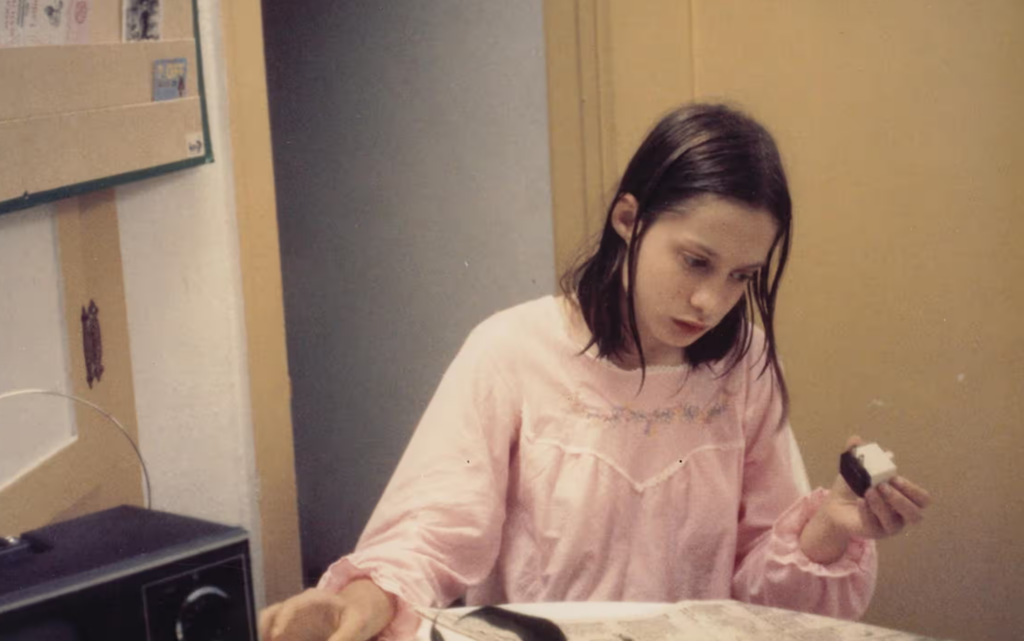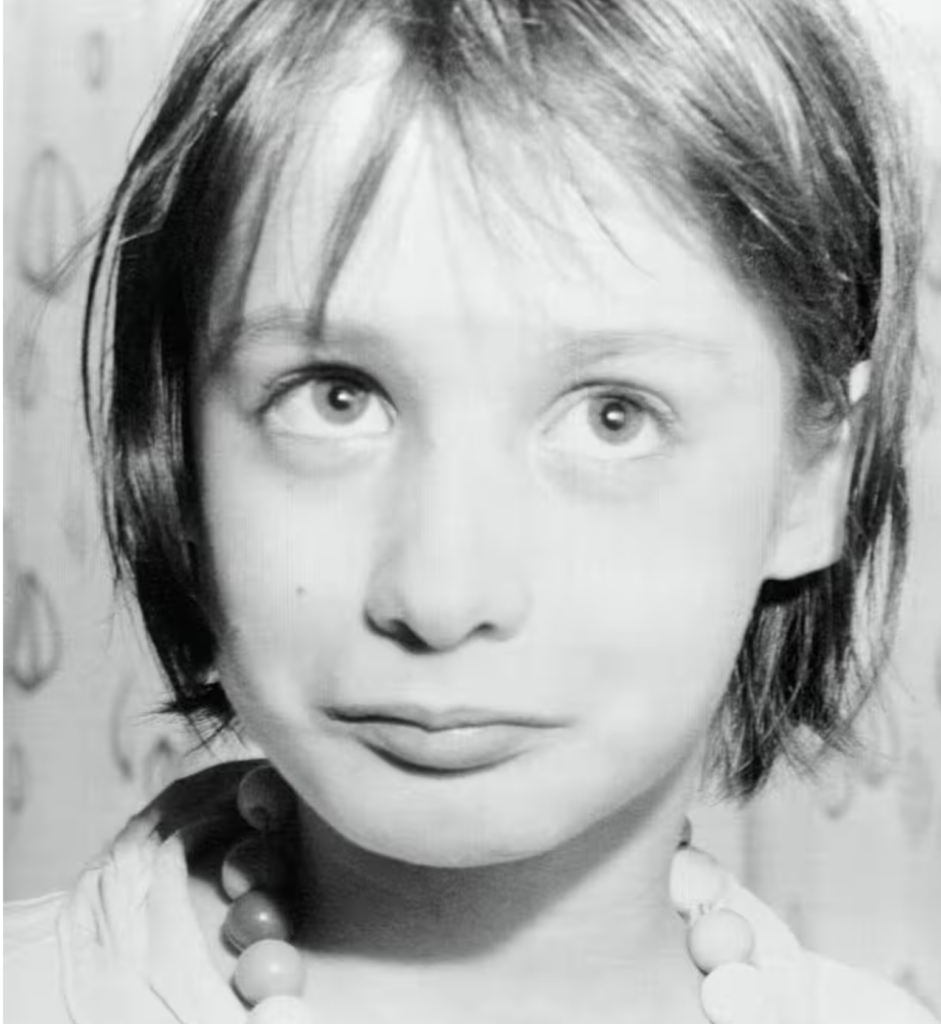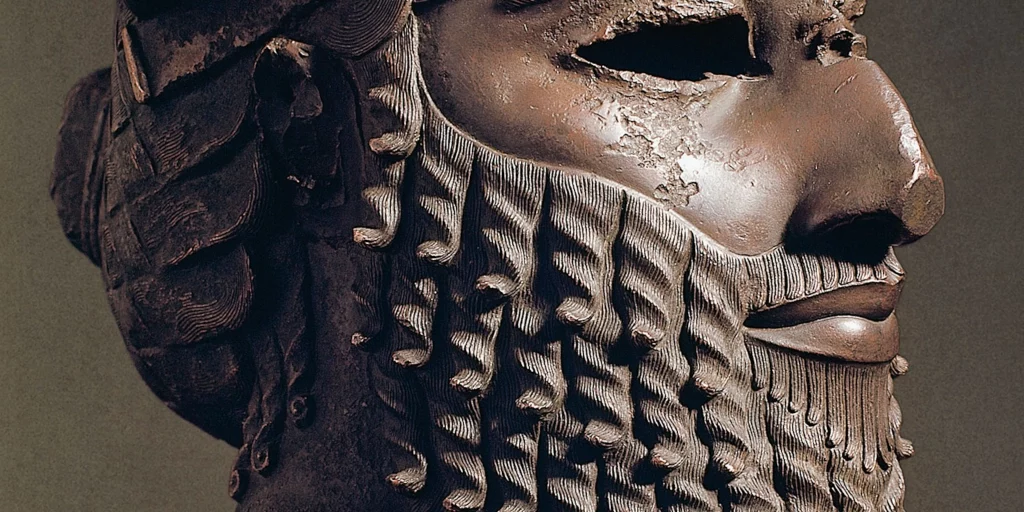What happens when a child is locked away from the world without any social interactions or education? What happens to a child that is raised in isolation and abuse, with little access to the outside world?
For Genie Wiley, these awful hypotheticals were very real.
She lived in near-total isolation. She was deprived of human connection and was stripped of the ability to communicate. Genie was a victim of horrible abuse for the first 13 years of her life.
Strapped to a chair by her father, her existence was hidden from the world for over a decade.
By delving into the tragic and heartbreaking details of her life, Genie Wiley’s story provides invaluable insights into the cognitive development of children. It shows the severe impact such conditions can have on their growth and well-being.
Her story gained the attention of a team of researchers who studied her extensively for years after. Through these studies, they learned a great deal about language, social development, and the intricacies of human behavior.
But her saga is one of tragedy and neglect.

An Abusive, Torturous Childhood
Born in 1957, Genie Wiley had a traumatic childhood marked by severe abuse and neglect.
In the years before her birth, her father had an abusive, deadly streak. This caused, both directly and indirectly, the deaths of some of her siblings.
At just 20 months old, Genie was confined to a small bedroom by her father. He tied her to a makeshift harness – which was more like a straitjacket – for almost 13 hours a day.
She was dressed in just a diaper and could hardly move. At night, her father would put her in a crib with a metal screen and tie down her arms and legs.
If Genie made any noise, her father would beat her, growl at her like a dog, and scratch her with his fingernails. Her father was clearly mentally ill and his behavior only furthered Genie’s quickly deteriorating mental condition.
Additionally, her father hardly fed her. She only ate baby food, cereal, and the occasional soft-boiled egg. He sometimes rubbed her face in her food if she choked. He refused to give her solid food.
She was mostly malnourished throughout her entire childhood.
Genie’s father also reportedly had a low tolerance for noise. He forbade anyone in the household to talk and kept the house nearly totally silent. Except for a few toys, there was little to do.
He kept the family confined in the house and allowed no visitors. He went so far as to sit in the living room with a shotgun to discourage any disobedience.
Genie’s father was an abusive, unwell individual who reaped untold harm not just on Genie, but on the entire family. However, little Genie Wiley would experience the worst. This would lead to lasting trauma and developmental issues.
Authorities Take Control
On the 4th of November, 1970, Genie’s mother went out to apply for disability benefits for the blind. She brought Genie with her. She happened to mistakenly stumble into the social services center next door.
The social worker who greeted them immediately knew something was wrong with little Genie.
They were shocked to see the girl’s disheveled appearance and “feral” manners. They estimated her to be around six or seven years old and possibly autistic. But when her mother confirmed her age, authorities were immediately brought in.
Both parents were charged with abuse. Genie’s father died by suicide the day before his court appearance.
Genie then became a ward of the state. On account of her physical condition and near-total unsocialized state, a court order was immediately issued for her to be taken to the Children’s Hospital of Los Angeles.

There she was assigned to therapist and psychiatry experts David Rigler and Howard Hansen.
Her father’s suicide and subsequent media attention quickly brought her case to the national spotlight. Her mother was also brought to court, but the charges against her were eventually dropped.
The case of “Genie Wiley” – a pseudonym that was implemented to protect her identity – was considered to be of the utmost interest by medical experts.
It was a rare case that could hopefully shed light on the effects of extreme deprivation and isolation on human development.
A team of psychologists and language experts immediately began the process of rehabilitating Genie. Significant funding was provided for scientific research on her case.
Genie’s Physical and Psychological State: A “Feral” Child
As a result of the trauma Genie endured at the hands of her father, she suffered from a range of physical, emotional, and cognitive injuries. This included malnourishment, developmental delays, language deprivation, and severe social isolation.
All told, this resulted in dire consequences for her overall physical and psychological health.
Because her father kept her locked up in a room for over a decade with minimal physical stimulation, she was completely prevented from learning how to read, write, or even speak.
Even after her rescue at 13 years old, Genie was unable to learn how to speak or engage in meaningful communication with others. This led to her developing nonverbal communication skills as a means of expression.
The doctors who examined Genies found her to be physically underdeveloped and mentally unresponsive. She had limited motor skills and signs of autism. Some would compare her condition to being “feral.”
She struggled to express herself and find her voice. She often used physical gestures and nonverbal expressions to convey basic needs and wants. Her isolation was so profound that she could not recognize herself in a mirror, even after being rescued.
Over time, Genie started making significant progress toward her cognitive and emotional recovery. She developed some nonverbal communication skills and eventually socialized with a few caretakers.
Her progress was continually hindered as she was relocated time and time again. She went through various foster homes where she suffered from further abuse. This only eroded any newfound social skills and mental health.
Genie’s journey is a quintessential example of how severe social isolation and abuse can lead to lifelong consequences.
Interest and Research From the Scientific Community
When Genie Wiley’s case came to light, it drew significant attention from the scientific community.
It was the case of a child who was severely neglected and abused. She had survived in almost complete isolation for so long and this provided researchers with an unprecedented opportunity to study the nature of human development.
Specifically, the information that could be gleaned on language acquisition and cognitive growth was seen to be crucial. Linguists, psychologists, and other scientists descended upon UCLA, hoping to learn something from studying Genie.
By December 1970, the National Institute of Mental Health (NIMH) even provided funding for the research.
The purpose was to understand the impact of her isolation. There was a belief at the time that if a critical period for language acquisition did exist, analyzing someone who had never learned language could help identify critical periods in language development.
Researchers attempted to teach her English. They hoped to discover how dependent language acquisition is on genetics and how much is reliant on the environment.
Genie took to playing with puppets and other toys. After many weeks, she began to try mimicking the sounds of her doctors.
As researchers studied Genie, she slowly made considerable progress, although some milestones were challenging.
She developed some non-verbal communication skills. But it became clear that Genie did not yet possess any ability to speak, read, or write at all.
She made some progress in terms of learning words and using basic grammar. But Genie’s inability to acquire full language capacity was deemed a disappointment by researchers.
By mid-1975, at the age of 18, research funds were drying up. Genie was allowed to move back home with her mother, although this was not meant to last.
Several medical aspects of Genie’s case are still debated today, decades later. Early study of human development would not have been possible without the unique environment in which she was raised.
However, Genie’s situation posed many other questions about the ethics of such research, as she was sometimes more or less treated like a research subject than a person.
Genie’s Progress and Rehabilitation
Genie’s progress and rehabilitation were somewhat remarkable given the extent of the damage she suffered. She initially struggled to communicate and often remained silent. But as the rehabilitation process continued, she learned to play, dress herself, and even communicate through pictures.
She arguably displayed high levels of intelligence. She could create complex structures out of sticks and other materials, and she could convey a story using a set of pictures.
It was also apparent that there were some limitations to her language acquisition. Despite the progress, Genie struggled with forming words into coherent sentences.
Susan Curtiss and David Rigler, two of the researchers most invested in Genie’s rehabilitation, found that her vocabulary was largely limited to her name and about 15-20 other words.
Despite some limitations in language acquisition, Genie’s rehabilitation did provide examples of significant progress in the face of intense adversity. Her social abilities improved while her outbursts and tantrums decreased.
However, the rehabilitation process was not without conflict and controversy. The researchers and caretakers constantly clashed with one another. This created tension that ultimately impeded the progress of the case. It limited the prospect of any “Helen Keller style” breakthrough.
Most importantly, the tensions only hurt Genie in the end. She was forced to be shuttled between hospitals, multiple foster homes, and many different caretakers and guardians throughout her younger years.
Living Arrangements, Legal Issues, and Custody Battles
Throughout her life, Genie Wiley experienced numerous living arrangements. She lived with complicated custody battles, quarantines, and personal conflicts between those involved in her care.
In 1971, Jean Butler, one of her teachers, hoped to gain custody of Genie. But hospital staff was skeptical of her intentions and tried to limit her access.
Genie was later sent to live with the Rigler family, the family of one of the researchers looking after her. She stayed there for nearly four years. By all accounts, she seemed to enjoy the classical music and activities they provided for her.
Despite the relative stability of her life with the Rigler family, Genie’s situation continued to be characterized by instability and frequent moves.
After a brief stint living with her mother, who found caring for her too difficult, she was placed in foster homes. Here, she suffered from more abuse and neglect. She was moved through at least four additional foster homes and institutions from 1978 until the 1990s.
From here, Genie’s story becomes muddied and difficult to follow. In 1993, one of her former researchers told the media that she was living comfortably in a state institution and was doing well.
All told, Genie likely moved through a dozen or so living situations over the years. This situation undoubtedly contributed to the developmental difficulties Genie faced throughout her life.
Genie’s Later Years
As of 2016, Genie Wiley has been living in an undisclosed location under the care of the state of California. Her brother kept away from her life until just before a recent public interview where he told reporters that he heard she was doing well.
Investigators who located her anonymously reported that she lived a simple and happy life in a small private facility. Though she only spoke a few words, she reportedly communicated well in sign language.
Despite the positive report of her condition, researchers who worked with her have told reporters of their deep heartbreak. They also feel unresolved grief both about her early life and their inability to stay in contact with her.
Curtiss, one of Genie’s closest researchers, had never been allowed to reconnect with her, leaving her feeling powerless to help her. The case had such a profound impact on some of the researchers involved that they found it difficult to confront the anguish it stirred up inside of them.
Genie’s life is a reminder that even when great strides are made in someone’s rehabilitation, the trauma of the past can last forever.
References
Carroll, Rory. “Starved, Tortured, Forgotten: Genie, the Feral Child Who Left a Mark on Researchers.” The Guardian, July 14, 2016. https://www.theguardian.com/society/2016/jul/14/genie-feral-child-los-angeles-researchers.
Cherry, Kendra. “The Story of Genie, a Child Deprived of Nearly All Human Contact.” Verywell Mind, October 28, 2022. https://www.verywellmind.com/genie-the-story-of-the-wild-child-2795241.

